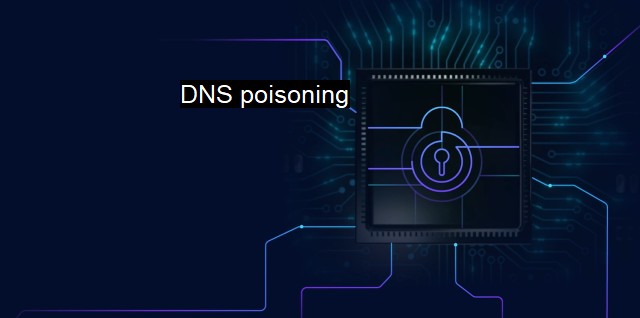DNS Poisoning: The Silent Threat Hijacking Your Internet Traffic
Introduction
The Domain Name System (DNS) is often described as the phonebook of the internet. It translates human-friendly domain names like example.com into IP addresses that computers use to identify each other on the network. But what happens when this phonebook is tampered with? That’s where DNS poisoning—or DNS cache poisoning—comes into play. In this blog, we’ll explore DNS poisoning in depth, how it works, its implications, and what individuals and organizations can do to protect themselves.
Chapter 1: Understanding DNS
Before diving into DNS poisoning, it’s important to understand how DNS works.
1.1 How DNS Works
When you type a website address into your browser, your computer sends a query to a DNS resolver (usually provided by your ISP). If the resolver doesn’t know the IP address, it queries other DNS servers in a hierarchical manner:
- Root DNS servers
- Top-Level Domain (TLD) servers
- Authoritative DNS servers
Once it finds the IP address, it caches it for a period of time to speed up future queries. This caching is what makes DNS efficient—but also vulnerable.
1.2 DNS Caching and Trust
Each level in the DNS lookup process can cache results. These caches are trusted implicitly, which is why poisoning one cache can have cascading effects.
Chapter 2: What Is DNS Poisoning?
DNS poisoning, also known as DNS spoofing, involves inserting malicious data into the cache of a DNS resolver. This corrupted data then misdirects users trying to access legitimate websites.
2.1 How DNS Poisoning Works
DNS poisoning typically works by:
- Sending a forged response to a DNS resolver before it receives a legitimate one
- Exploiting vulnerabilities in DNS server software
- Redirecting users to malicious or fake websites
2.2 Types of DNS Poisoning
- Cache Poisoning: Inserting false IP mappings in a resolver’s cache
- Man-in-the-Middle Attack: Intercepting and modifying DNS traffic
- DNS Hijacking: Modifying DNS settings at the device or network level
2.3 Real-World Examples
One notable case was the 2010 DNS poisoning attack in China, where traffic destined for Facebook, Twitter, and other sites was redirected to different servers.
Chapter 3: Implications of DNS Poisoning
3.1 Security Risks
- Phishing Attacks: Redirecting users to fake login pages
- Malware Distribution: Sending users to malware-infected sites
- Data Interception: Intercepting sensitive data such as login credentials
3.2 Business Impact
- Loss of customer trust
- Financial losses due to fraud
- Legal liabilities and compliance issues
3.3 Broader Network Consequences
- Undermines internet trust
- Can be used for censorship and surveillance
- Impacts users beyond the original target if upstream caches are poisoned
Chapter 4: Upstream DNS Cache Poisoning
If upstream DNS caches have been poisoned, attackers may be intercepting traffic before it even gets to you. This level of attack is especially insidious.
4.1 What Are Upstream DNS Caches?
These are the DNS caches closer to the root or TLD servers, usually operated by ISPs or major DNS service providers.
4.2 How Poisoning Upstream Caches Works
- Compromising a widely-used resolver
- Sending forged responses to popular DNS queries
- Affecting all downstream users querying that resolver
4.3 Consequences of Upstream Poisoning
- Wide-scale redirection of traffic
- Increased difficulty in detection
- Trust in DNS infrastructure severely compromised
Chapter 5: Detecting DNS Poisoning
5.1 Signs of DNS Poisoning
- Website redirects to unexpected domains
- SSL certificate mismatches
- Frequent pop-ups or fake antivirus warnings
5.2 Tools for Detection
- Wireshark: Monitor DNS traffic
- DNSViz: Visualize DNS configurations
- nslookup/dig: Compare results from multiple DNS servers
Chapter 6: Preventing DNS Poisoning
6.1 Use DNSSEC
DNS Security Extensions (DNSSEC) add cryptographic signatures to DNS data. It ensures the integrity and authenticity of DNS responses.
6.2 Configure Your DNS Servers Securely
- Disable recursive queries if not needed
- Regularly update DNS server software
- Implement rate limiting and response randomization
6.3 Use Trusted DNS Providers
Opt for DNS services like Google DNS, Cloudflare, or OpenDNS which offer additional security layers.
6.4 Monitor and Audit DNS Traffic
- Use IDS/IPS systems
- Log and review DNS queries regularly
Chapter 7: DNS Poisoning in the Age of IoT and 5G
7.1 IoT Vulnerabilities
Many IoT devices rely on DNS but lack strong security protocols, making them easy targets.
7.2 5G Networks and DNS
With the explosion of 5G, more devices are connecting to the internet, expanding the attack surface for DNS-based attacks.
Chapter 8: Government and Legal Perspectives
8.1 Legal Ramifications
- Unauthorized DNS poisoning is illegal under various cybercrime laws
- In some regimes, state-sponsored DNS poisoning is used for censorship
8.2 Global Cooperation
Efforts like the Global Forum on Cyber Expertise (GFCE) aim to improve DNS security globally.
Chapter 9: Future of DNS Security
9.1 Emerging Standards
- DoH (DNS over HTTPS)
- DoT (DNS over TLS)
- Encrypted Client Hello (ECH)
9.2 AI in DNS Security
Machine learning models can detect anomalies in DNS traffic, improving real-time detection.
9.3 Blockchain-Based DNS
Decentralized DNS solutions aim to eliminate single points of failure and reduce vulnerability.
Conclusion
DNS poisoning is a silent yet potent threat that compromises one of the most fundamental pillars of the internet. From simple cache tampering to large-scale upstream poisoning, attackers are becoming increasingly sophisticated. While technologies like DNSSEC, DoH, and AI offer hope, awareness and proactive defense remain the strongest tools against this menace. Whether you’re a casual user or a network administrator, understanding and addressing DNS poisoning should be a priority.

